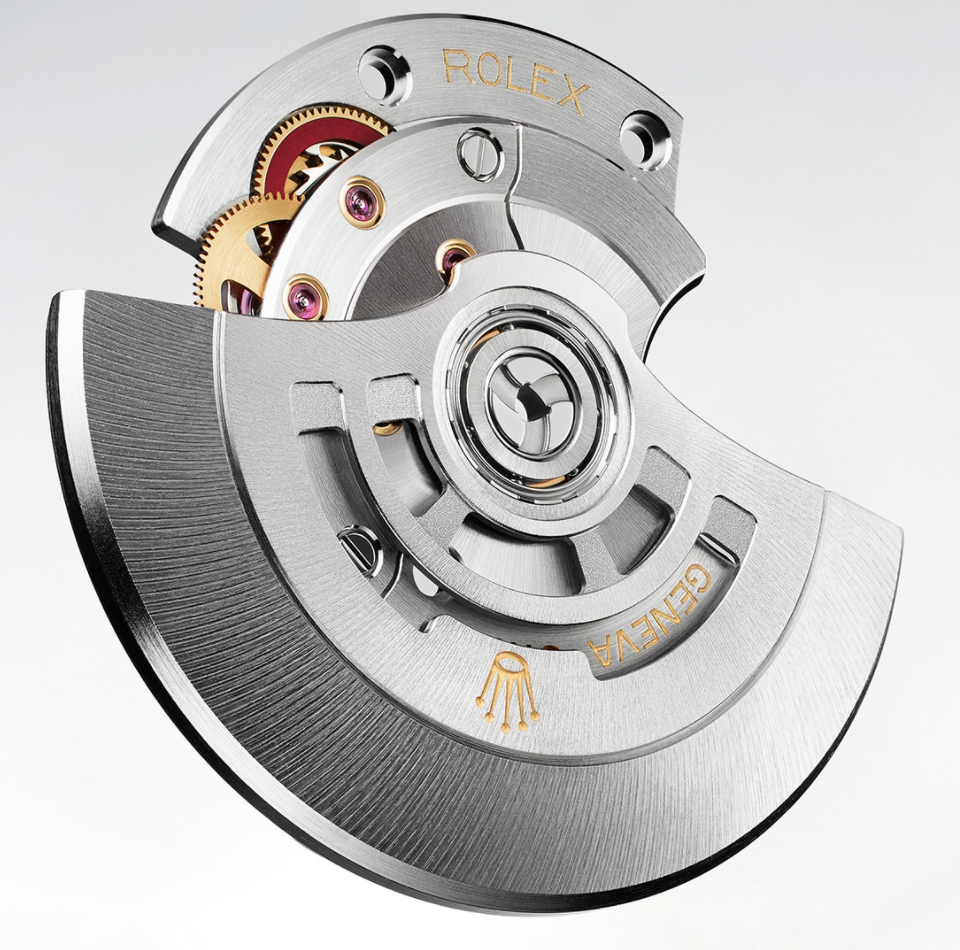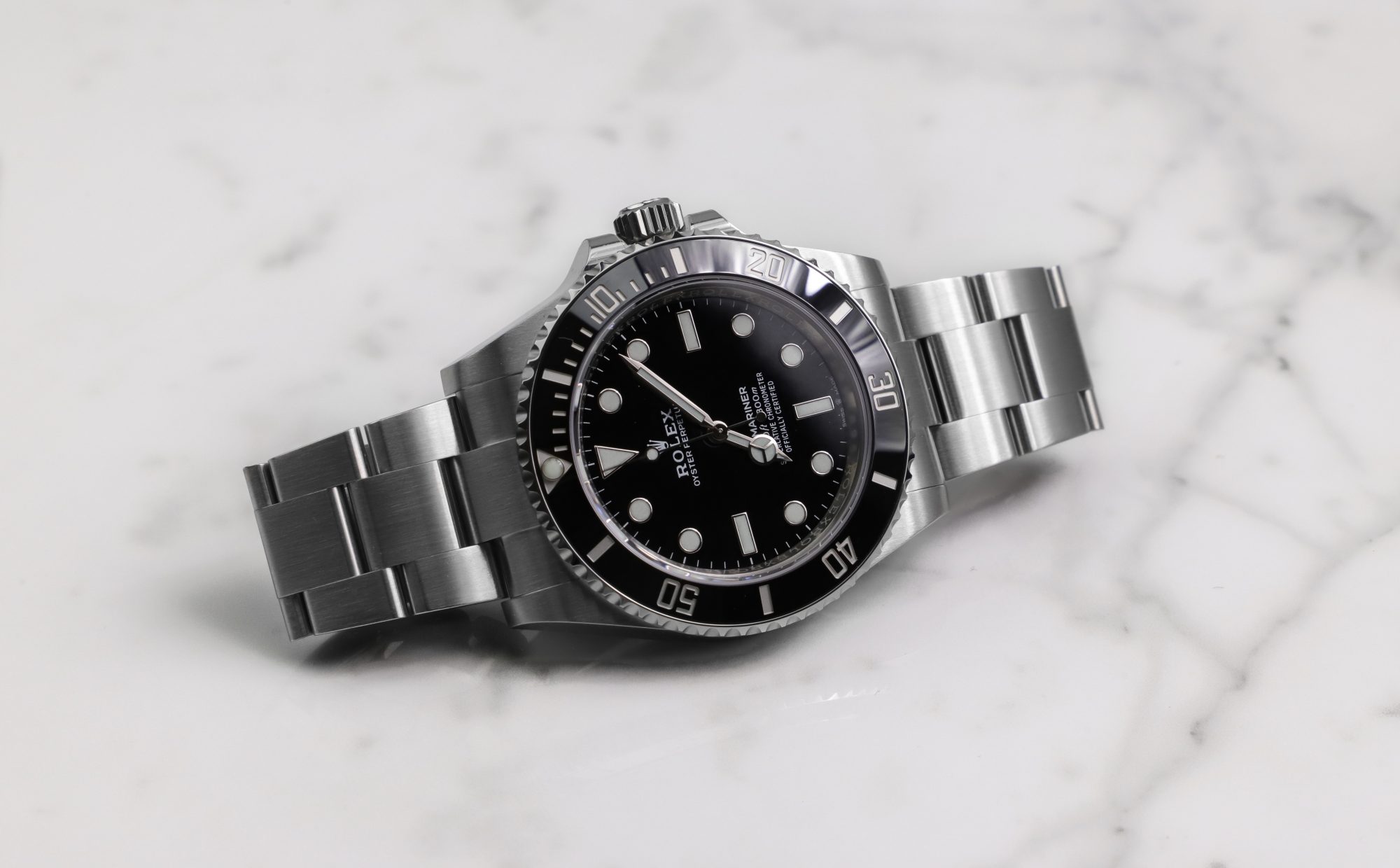
How Long is Rolex Power Reserve? [Complete Guide]
Automatic watches are watches powered by automatic, mechanical movements. They are built with a rotor inside that rotates as the writ moves. When the rotor rotates, it winds the movement and charges it with energy. Since the invention of the automatic movement, hand-wound movements that needed to be wound manually have slowly but surely been pushed aware in favor of the, evidently, superior and more practical automatic movement.
When Rolex first started, automatic movements didn’t really exist, although some prototypes have been made. In 1931, Rolex invented and patented a self-winding mechanism with a free rotor which they called the Perpetual rotor.
Whilst they have not been credited to be the first, they are responsible for bringing the automatic watch to the market and making it more mainstream. Since then, Rolex slowly but surely phased out its manual-wound movements in favor of the automatic movements as they saw them as more superior and functional.
Therefore, we will in this article focus on the power reserve of automatic Rolex watches, even though manual, hand-wound watches have power reserves as well.
About watches power reserve
The power reserve of a watch refers to the mainspring of a watch and specifically, its ability to store energy. The mainspring is a spring that, when wound, gets tighter. When the watch then runs, it unwinds. And when it is fully unwound, the watch is out of energy. The capability and length of the power reserve have always been something that most watch brands have worked to improve. Today, most automatic watches have a power reserve of 38-50 hours, but there are those with both shorter and longer reserves.
For obvious reasons, and in general, more affordable watches tend to have lower power reserves, whilst more expensive watches tend to have longer power reserves.

It’s easy to believe that improving the power reserve of a watch is super easy. Why don’t watchmakers don’t just make larger mainsprings? Because it’s of course not that simple. There’s a lot more complexity and craftsmanship that goes into it than that. If a mainspring is too powerful when fully wound, it may result in the watch running too fast. And if it unwinds too slowly, it can make the watch run too slow. So the mainspring has a great effect on a watch’s accuracy as well and needs to be developed so that the accuracy isn’t compromised when the power reserve is improved.
The key to a long power reserve and an accurate watch is a combination of a great mainspring and a superior escapement. In Rolex’s own words:
“Through its alternating beats, in interaction with the oscillator, the escapement is the “key to time” in the movement. It receives and regulates the raw energy from the mainspring and transmits that energy in impulses to the oscillator, which determines the division of time. Without the escapement, the mainspring would unwind in one go and release all its energy at once. And without the escapement to maintain the oscillations, the hairspring and balance wheel would rapidly lose their momentum and the movement would stop after a few minutes.”
This brings us to the main question of this article, how long is Rolex power reserve?
How long is Rolex power reserve?
The answer is that the power reserve of Rolex’s watches varies across models and when they were made. In Rolex’s current collection, the shortest power reserve of its watches is approximately 55 hours and is for the smaller ladies’ watches. One exception is the Milgauss 116900 with a power reserve of 48 hours, but this model is due for an upgrade soon and will then get 70 hours of power reserve. The longest power reserve that any Rolex watch has is approximately 72 hours. The Sky-Dweller is one of the models that offer the brand’s longest power reserve.
A long power reserve in an automatic watch is desirable as it makes it more practical. And any way Rolex can make their watches more functional and practical, they will. Therefore, Rolex has heavily invested in research and development when it comes to the power reserves of its watches.
As such, the power reserves of Rolex watches have, over the years, gotten longer and longer.

As mentioned, most automatic watches on the market today have a power reserve of about 38-40 hours. When it comes to Rolex, the smaller ladies’ watches tend to have a shorter power reserve due to the fact that the movement is smaller which limits the ability to have a large mainspring.
To ensure the proper functioning of each watch’s power reserve, Rolex strictly tests its watches before asserting them the “Superlative chronometer officially certified” certification. Some watches may have a specified power reserve and then not live up to it in real life. But since Rolex tests every watch before certifying them, they are confident that the power reserve performs as it should. But since the exact power reserve will always depend on a number of factors, Rolex always writes “Approximately” when specifying the power reserve. Things like how it is worn, in which climate it is worn, and if the mainspring is fully wound are all things that may affect how long the power reserve actually is in practice.
Below are the power reserves of some of the most important Rolex models. Note that the power reserves listed are for the current, in-production watches, and older versions may have shorter power reserves. For a specific model range, every version has the same movement (and thus the same power reserve), regardless of things like dial design, bracelet option, and other design traits.
Rolex models power reserve
- Datejust 41: 70 hours
- Submariner 41: 70 hours
- Day-Date 40: 70 hours
- Day-Date 36: 70 hours
- Sky-Dweller: 72 hours
- Daytona: 72 hours
- Yacht-Master: 70 hours
- Yacht-Master II: 72 hours
- Oyster-Perpetual 36 & 41: 70 hours
- GMT-Master II: 70 hours
- Air-King: 70 hours
- Milgauss 116900: 48 hours
- Sea-Dweller 43: 70 hours
Rolex power reserves now and then
As mentioned, Rolex has invested a lot in research and development – and continues to do so – to improve the longevity and performance of its movements. This also relates to its movements. With that said, whilst the shortest power reserve amongst Rolex watches in its current collection is 55 hours, that has not always been the case.
Older Rolex watches, therefore, have shorter power reserves than their more modern timepieces. As an example, the Rolex caliber 2030 found in Rolex’s vintage ladies watches “only” has a power reserve of 42 hours, which is considerably shorter than the 55-hour power reserve they offer today.
Furthermore, the Submariner reference 1680 only has a 48-hour power reserve, whereas the power reserve of the current Submariner has been improved to 70 hours!

This just goes to show that not only has Rolex focused heavily on research and development for improving the power reserve of its watches, but they have also succeeded in making it happen.
In 2018, Rolex came up with a revolutionary new innovation that would greatly improve the power reserve of most of its watches. This innovation would ultimately lead to Rolex upgrading most of its models to feature a power reserve of 70 hours. Rolex patented this innovation and called it the Chronergy escapement. Rolex also improved a number of other parts inside its movements to further improve energy efficiency. For example, reducing friction is another important aspect of improved power reserve since less than 40% of the mainspring’s energy reaches the oscillator.
Rolex developed and patented a new version of the Swiss lever escapement with the Chronergy escapement which helped improve the energy efficiency of its movements. The result was an improved efficiency of the escapement by 15%.

Rolex power reserve problem
Due to the nature of any mechanical object, there are some instances when things don’t work the way they should. Since hundreds of parts need to work perfectly together in harmony with micro-mm or nano-mm precision, there are times when issues arise. Despite Rolex’s stringent tests and superlative chronometer certification. For example, the precise interaction of the pallets with the teeth of the escape wheel of Rolex’s movements has tolerances of microns: 0.01 millimeter. Too much or too little and the mechanism would stop.
Occasionally, some people experience issues with the power reserves of their Rolex watches. Usually, the issue is that the power reserve performs worse than it is specified to work.
If you are experiencing that the power reserve of your Rolex is much shorter than it is supposed to be, begin by winding the watch to the max. If you’re not very active, your wrist movements may not be sufficient to fully wind the watch. And as such, the power reserve will naturally be shorter. Make sure you fully wind the watch. Now, test the watch and see if the power reserve performs as it should.
If you’re still experiencing issues, you should take it to a Rolex retailer for assessment by a watchmaker.
If your watch is still covered by Rolex’s 5-year international warranty, this is an issue that will be resolved under the warranty. Just take your watch to an official Rolex retailer and they will be able to troubleshoot it and make corrections so that it functions properly.





Just had my Oyster Perpetual 1953 vintage repaired and serviced at a Rolex recommended agent at a great cost. I find it is loosing 20 seconds over 24 hours and has a power reserve of barely 12 hours. Do you think this acceptable?
Hi,
It’s difficult to say without knowing the exact reference number of your watch (and thus also the caliber it uses).
But it could be that your watch uses the caliber 645 if it is from 1953. In this case, the power reserve is 41. Some older Rolex movements have a tolerance of about +15 seconds per day. So whilst it is not absolutely perfect, it is not completely off the charts. Rolex is, however, stricter when it comes to losing time rather than gaining.
It’s an older movement that doesn’t meet the same accuracy as modern Rolex calibers. It should be possible to regulate it to achieve great accuracy but it’s a bit much to ask to have modern-Rolex accuracy from this watch. For a freshly serviced watch, however, it’s reasonable to expect a slightly better accuracy.
Kind regards,
Millenary Watches